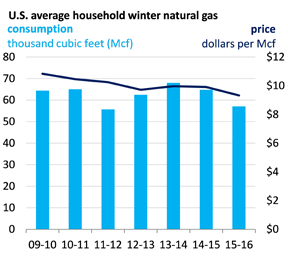Vote For a Good Book on a Cold Night - Vote4Energy
Mark Green
Posted February 3, 2016
Imagine a mother reading a story to her child. They’re snuggled up in a chair, the soft lamplight illuminating their storybook as a cold winter wind blows outside the window.
It’s a scene we often take for granted – a book, the light to read it by and a warm, comfortable home – yet all exist because of energy.
Let’s start with the book. Energy is used to grow and harvest the trees that become the paper. More energy is used to transport those trees to a paper mill. Still more energy (in the form of biomass, coal, natural gas and oil) is used to make the pulp slurry that is then pressed and heat-dried to make paper before the paper is sent to the printer to be printed, cut, collated and bound.
And it took energy to make the machines used throughout the process, to keep those machines (and the lights) on at the various factories, make sure the workers are comfortable and control the ambient humidity and temperature that are critical for maintaining printing and binding.
Producing a book is a manufacturing process, and it requires a lot of electricity, propane (for dryers and other heated processes) and oil (to heat the facilities), in addition to raw materials (paper, ink, adhesives, coatings) derived from petroleum.

When a book is finally finished, more energy is used to package the book, get it to a bookstore, and then to your home (whether you drive to the store or order online.
Still, energy efficiencies have certainly made modern book making blazingly fast. Over 1.5 billion hardbacks and paperbacks were sold in the U.S. in 2014. By comparison, it took five hours to make a single book using the Gutenberg printing press.
All that printing has led to a whole lot of reading. Thanks in large part to energy advances over the years, we’ve also seen an increase in literacy. And more parents, worldwide, reading to their children before bed.
But book production is just the tip of the energy iceberg, because we also need to account for the energy that it takes to create that cozy scene – the electricity that powers that soft lamplight, and the natural gas that heats that home on a winter evening.
About 50 percent of Americans rely on natural gas for heating purposes, and right now, because of ample supplies and falling global demand, the U.S. is benefiting from some of the most affordable natural gas prices in recent history. According to the U.S. Energy Information Administration’s Winter Fuels Outlook, average household expenditures for homes heating with natural gas will total $532 this winter, a $110 decline from last winter’s average.


Building out additional energy infrastructure could give consumers access to an adequate natural gas supply and lower energy costs even further, according to EIA, particularly in the Northeast where infrastructure is already strained:
“In the Marcellus and Utica plays, production has grown rapidly over the past several years, and infrastructure growth has not kept pace….In times of high demand for heating in the winter, natural gas spot prices can rise substantially in market areas such as New York and Boston.”

With few pipelines to deliver natural gas, energy prices in New England have soared and the region is facing an electricity crisis. In winter 2015, New England overall electric rates went up an average of 9.7 percent last year (January 2014-January 2015) to 17.34 cents per kilowatt hour, the largest increase in the nation.
While this year’s warmer winter start has led to slightly lower rates, winter isn’t quite over yet in the New England – as January’s winter storm Jonas aptly illustrated. ISO New England Chief Executive Officer Gordon van Welie recently noted that the region’s power grid is in a “precarious position” during the coldest weeks of the year, as natural gas is shifted to heating homes and businesses instead of supplying power plants. “The region will continue to be in this position until New England’s natural gas infrastructure is expanded to meet the demand for gas,” he said.
The effect of New England’s energy infrastructure constraints could be far-reaching. A study by the New England Coalition for Affordable Energy found that underinvestment in infrastructure will impact the region with $5.4 billion in higher energy costs, lead to the loss of 52,000 private sector jobs between 2016 and 2020 and reduce household spending by $12.5 billion.
Not surprisingly, it’s an issue that has also come to the attention of six of New England’s governors who have vowed to collaborate to expand the region’s natural gas pipeline capacity. “Pipelines have long been recognized by New England's governors as a cost-effective way to solve” the region's growing energy demands, said Katie Dykes, Connecticut Gov. Dannel P. Malloy’s deputy commissioner in charge energy policy.
Several large energy infrastructure projects, including pipelines that would bring natural gas from Pennsylvania into New England and electric transmission lines to bring in hydroelectric power from Canada and wind power from northern Maine, have been proposed. However, these projects are currently undergoing permitting and have become the focus of fierce opposition by environmentalists and anti-energy groups.

For paper mills in Maine – the early stage manufacturers who helped make our storybook in our nursery scene possible – lower energy prices couldn’t come soon enough. Paper of all types is still a big industry in Maine. In fact, it was Maine’s top export category in 2014, valued at $484 million, surpassing fish and other marine products, oil and gas, computer and electronic products and transportation equipment. At its peak in the late 1960s, Maine’s paper industry employed about 18,000 people.
But during the past few winters, Maine paper mills have routinely been forced to limit production or shut down parts of their operations for weeks at a time because of the state’s natural gas shortage and high energy costs, sending thousands of hourly workers home without pay and permanently laying off others. In just the past two years alone, Maine has lost more than 1,500 paper mill jobs.
Fourteen paper mills closed between 1980 and 2015. Several factors have contributed to the mill closures, but one reason is that due to pipeline bottlenecks, paper mills in Maine pay up to 50 percent more for natural gas than paper mills in other states and regions where natural gas is plentiful and cheap.
Based on 2014 data, Maine’s industrial electricity cost of $89.50 per megawatt hour is almost double its lowest competitor (Washington, $43.20/MWh) among the other leading pulp and paper states of North Carolina, Georgia, Louisiana, Mississippi, Michigan, Wisconsin, Minnesota and Washington. Its natural gas cost of $11.53 per million cubic feet is more than double the lowest competitor (Louisiana, $4.68).
“Energy costs have historically been a problem for our mills,” John Williams, president of the Maine Pulp & Paper Association, told CentralMaine.com in 2014. “In other parts of the country they don’t have this problem, because it’s not that there isn’t gas. There’s plenty of gas. The problem is getting it into New England. The pipeline capacity is just not sufficient.”
For many paper mills in Maine and their employees, the story on energy has come to an unfortunate end. But that doesn’t mean the final chapter on energy has been written and printed. Here’s hoping – for the sake of booklovers and readers everywhere – that there can ultimately be a happy ending.
About The Author
Mark Green joined API after a career in newspaper journalism, including 16 years as national editorial writer for The Oklahoman in the paper’s Washington bureau. Previously, Mark was a reporter, copy editor and sports editor at an assortment of newspapers. He earned his journalism degree from the University of Oklahoma and master’s in journalism and public affairs from American University. He and his wife Pamela have two grown children and six grandchildren.


